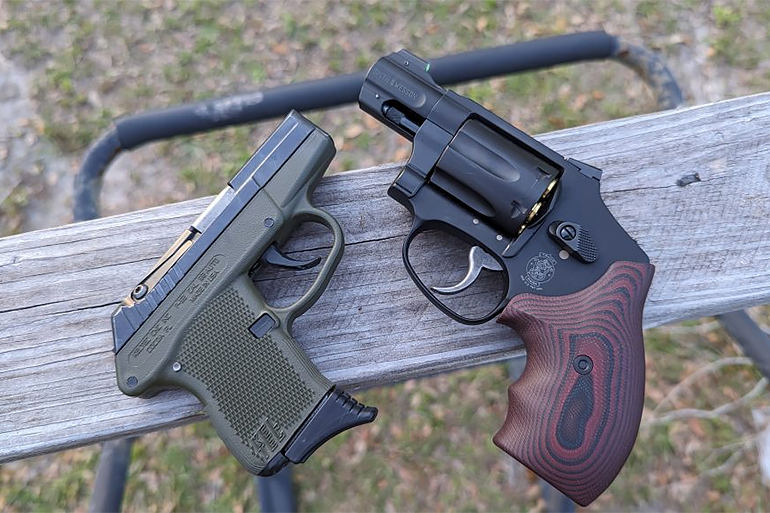
There is only a handful of guns chambered in .32 still being produced. In fact, there are so few that you can probably count them on the fingers of both hands. Taurus makes a .327, Ruger makes a couple, Beretta produces the 30X, and KelTec makes the P32. Not to mention the Seecamp and Seecamp clones from NAA.
Oh, and in the year 2024, Smith & Wesson teamed up with Lipseys to produce the Model 432 UC or Ultimate Carry. The new 432 is a six-shot J-frame chambered in the classic .32 H&R Magnum.
I like .32s and I think the varied .32 calibers that still exist for revolvers and automatics are interesting options for pocket pistols. They tend to offer low recoil, which makes it easy to shoot even though they’re so small. Shooting a pocket .380 or a lightweight J-frame in .38 Special is downright painful and challenging to do adequately.
With that in mind, of all the .32s still in production, the KelTec P32 and the S&W 432 seem to be the easiest to find these days and, as the owner of both, I wanted to put them head to head and see which does better.
The Obvious Difference
First, the big difference, of course, is the P32 is a semi-automatic and the S&W 432 UC is a revolver. That’s a pretty big difference and will obviously be a selling point on either side to some. Anyone can tell the difference between the two guns, but I hope to explain them in depth and provide an educated opinion if you’re trying to decide between the two.
One thing the 432 has going for it is the fact it’s a J-frame. They’ve been around since forever and are the SIG P365 of concealable revolvers.
There are tons of holsters out there for J-frames, and scores of grips, sights, and other accessory options. The P32 has been around for 25 years now, but it’s more of a niche gun. There aren’t as many holster choices available, and certainly not many options for customizing the gun.
I’ve carried a P32 for a few years now and recently switched to the 432 UC as I test the gun for a review. I recently went to the range with both and fired a number of drills to test each gun’s accuracy, speed, and capability. I’ve also carried each gun often enough to talk about their concealability and ease of carry.
Concealment
KelTec’s micro-sized P32 comes in as the clear winner in a concealability contest. It’s one of the smaller semi-automatics and certainly among the lightest at only 6.6 ounces. The micro-sized P32 is ultra-thin and lightweight….it virtually melts into your pocket and disappears easily. It’s one of the best deep-carry guns I’ve ever owned.
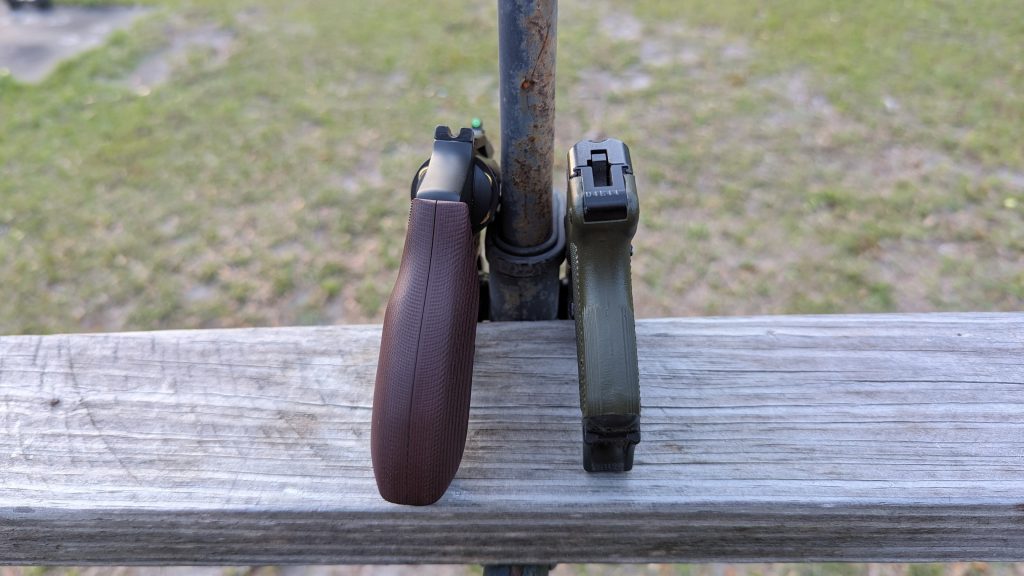
As a J-frame, the S&W 432 UC is larger. The grips, which are fantastic, deliver a bigger, hand-filling experience. That’s great in many ways, but it detracts from the gun’s concealment capability. The 432 isn’t difficult to conceal, but the P32 disappears like a magician’s assistant.
Capacity
One of the benefits to carrying a .32 is the ability to hold more rounds. Your typical pocket .380 holds six rounds, but the P32 holds seven in the magazine. With most J-Frames, we get a mere five rounds of .38 Special, but with the 432 there are six. Extra ammo is always good. It’s hard to argue otherwise and we have to give the P32 an edge here. The magazine holds an additional round. With one more in the pipe, we get eight rounds versus six.
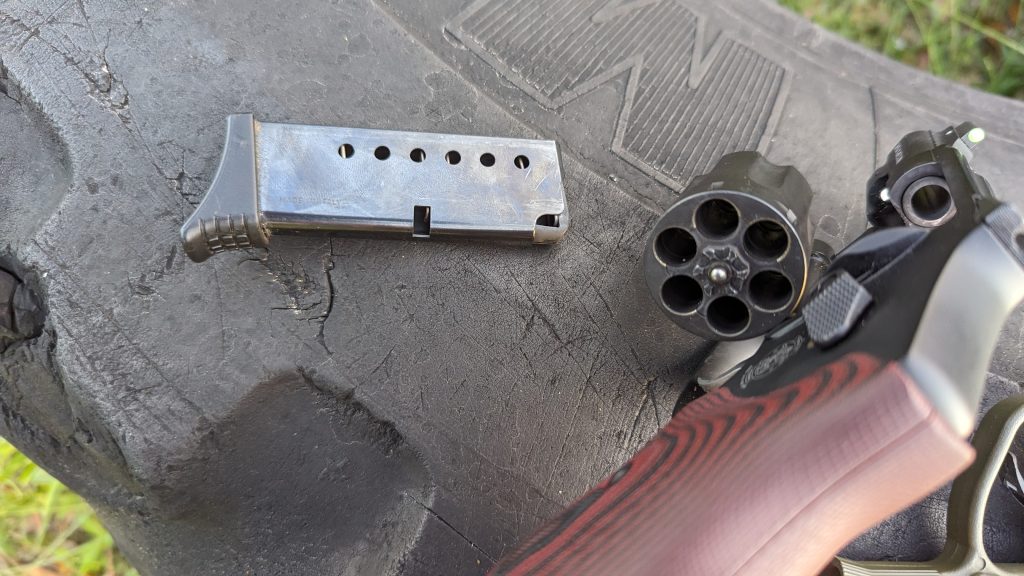
Reliability
What’s more reliable, a KelTec or a Smith revolver? I can already hear the screaming from S&W side of the audience. KelTec has had spotty reliability in the past and some QC issues, but they cleaned up their act long ago. Second, the P32 has been around since 1999 and KelTec has figured out how to make the P32 work. I own two P32s, and they function extremely well.

Here’s the thing — .32 ACP has an interesting issue with something known as rimlock. The .32 ACP round is partially rimmed, much like a revolver round. When the rounds sit in a magazine, they tend to be sensitive to overall length. If they’re too short and have room to move the rim of one round, they can lock into the others either above or below and cause failure-to-feed issues. This can be an issue in the P32 and in every other .32 ACP gun if you use hollow points.
Using hollow points from a pocket-sized .32 ACP is downright silly. You need an FMJ to get adequate penetration. Is the 432 UC more reliable? Well, it can certainly handle hollow points reliably. However, it’s really a nonissue.
Accuracy
Accuracy tests are always fun. They’re dependent on the shooter and I admittedly have more time with the P32 and semi-auto handguns in general. However, both of these guns feature a long, double-action-only trigger pull and short sight radii.
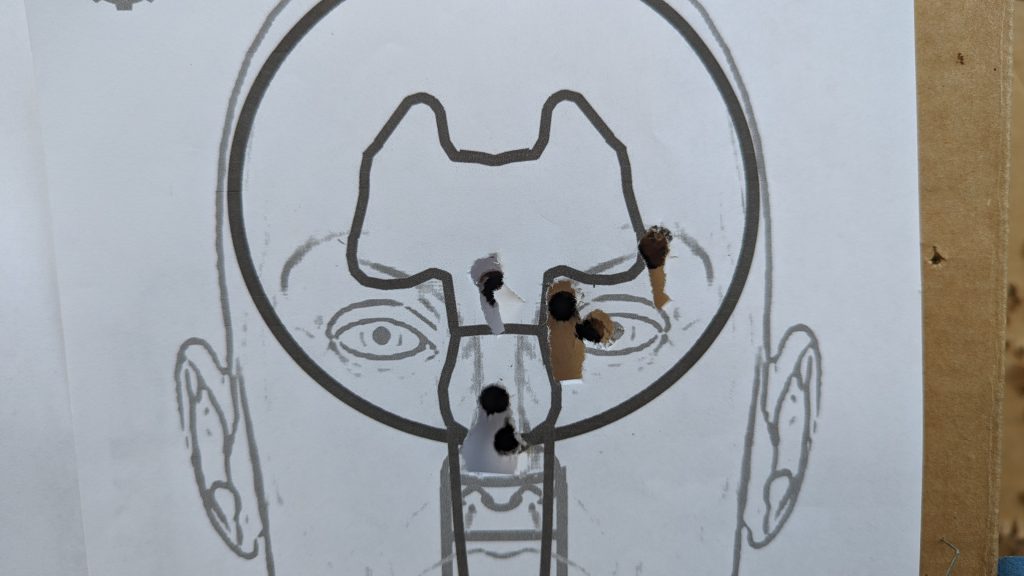
I practiced by simply shooting a six-shot group at ten yards with a time standard of six seconds. One second per round is a fair bit of time when starting from the ready. I found that the 432 UC shoots a tighter, more consistent group than the P32.
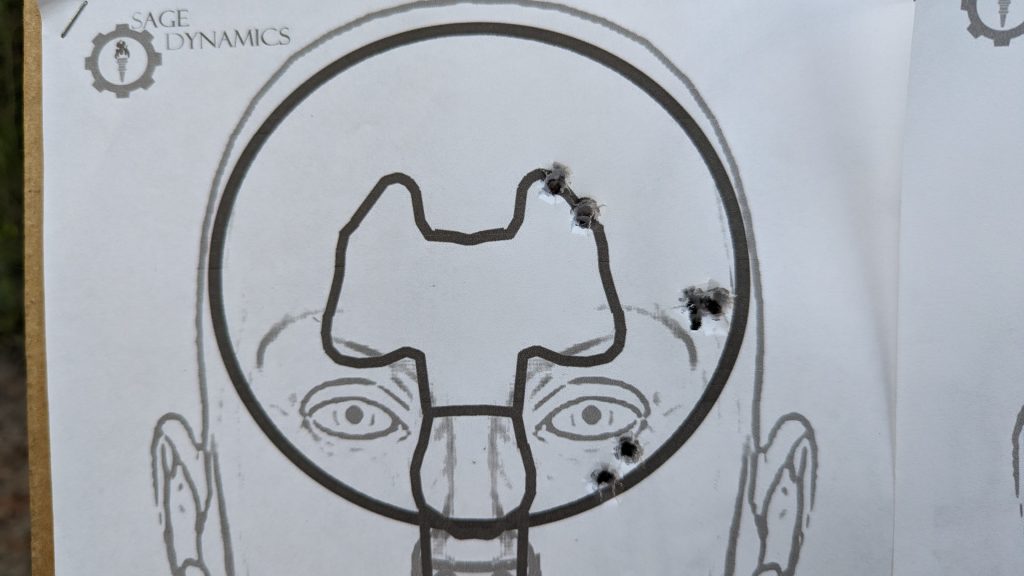
I backed my butt up to the 25-yard line and used a steel IPSC target. That’s a big target, but 25 yards can be challenging for these small guns. I kept the same time standard of one second per round. With the P32, I initially hit one out of three. With the 432 UC, I landed all three rounds.
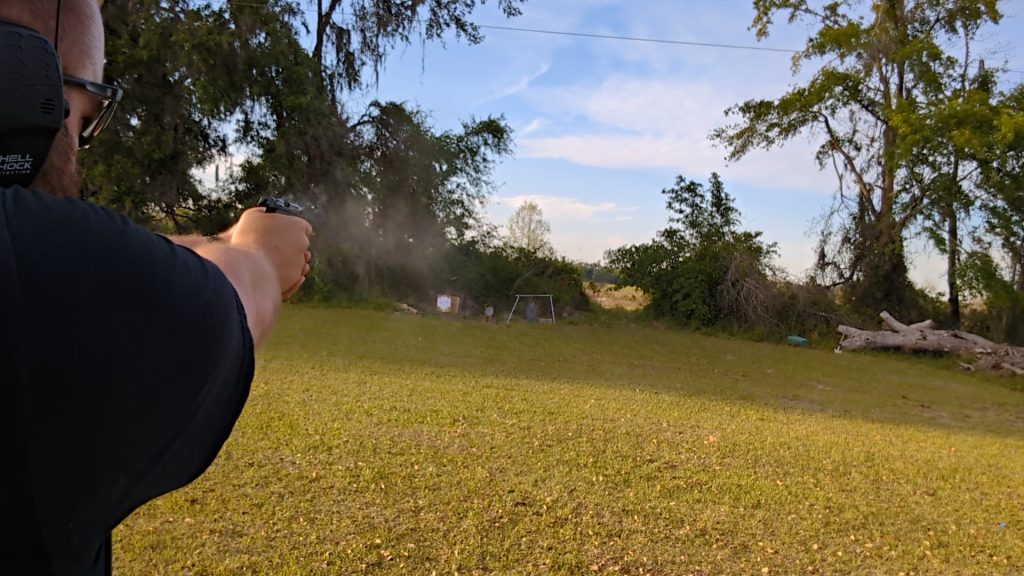
I repeated this over and over and the best I managed was two rounds with the P32, and I only missed once with the 432 UC throughout the half-dozen runs.
The larger J-frame grips of the 432 and its big, easy-to-see sights give the 432 a huge advantage here. KelTec gives us micro-sized sights. Have you ever drunk a La Croix sparking water? KelTec offers the same amount of sights that La Croiz offers in terms of flavor.
Speed Shooting
When it comes to going fast, I practiced two drills at ten yards. The first was three shots from the low ready as fast as possible with my shots in the A-zone. The two guns performed pretty much the same. The 432 was fractionally faster due to the larger sights, but I’m using a stress-sight picture at this range anyway.
The second was drawing from the pocket. I ran this particular drill in two different ways. The first was hands outside the pocket at my sides. In this drill, the average time with the 432 was about two seconds to get one shot on target. With the P32, it was closer to 2.5.
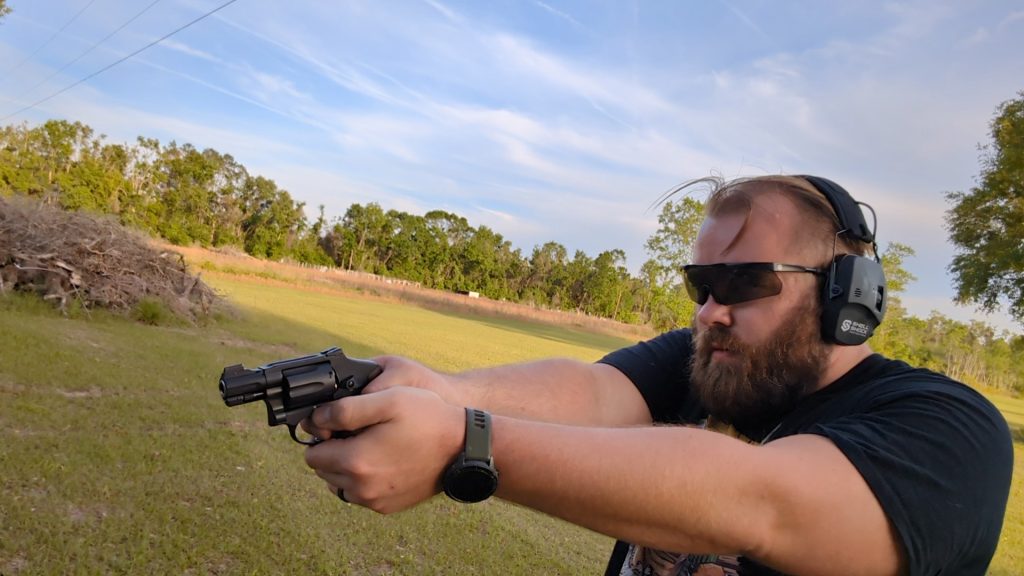
The second way I ran the drill was with my hand in my pocket, on the gun. This pre-draw is a major advantage of pocket carry. From this position, I was able to score a .99 with the 432 and a 1.22 with the P32. Those oversized grips on the 432 make the gun easier to grab and faster to get into action. The big green front sight also made a big difference in getting on target quickly.
Caliber Potency
The .32 ACP offers penetration and only penetration. The little round can really only reach the desired depth of penetration with FMJ loads when fired from a barrel this short. The cartridge can just penetrate deep enough to reach the vitals and stop a threat.
The .432 fires .32 H&R Magnum. It’s a more powerful cartridge that digs deeper and can be used with hollow point bullets. With a hollow point, you can achieve proper expansion and penetration.
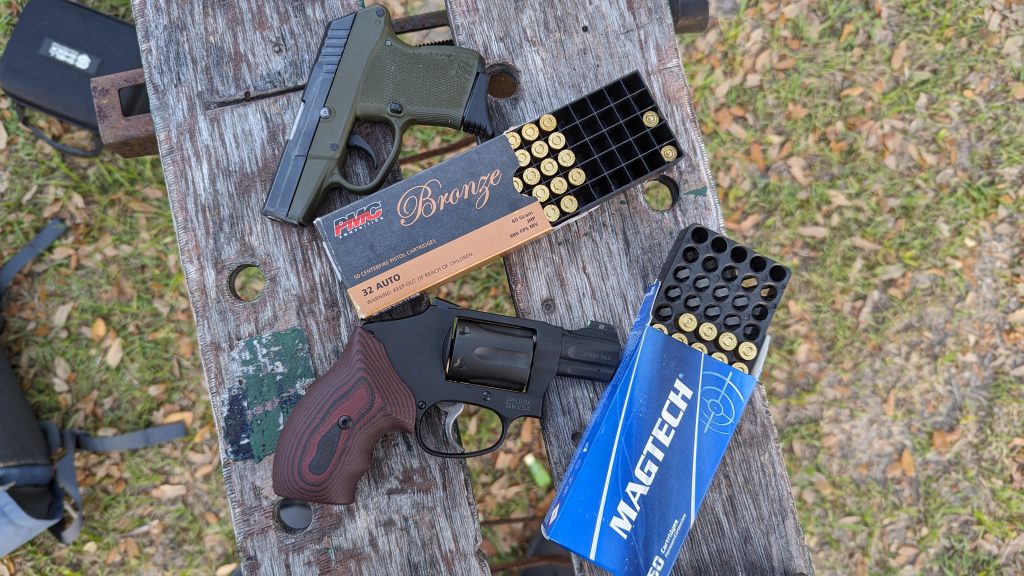
That’s a nice advantage. Additionally, the 432 can fire the .32 S&W Long round, which is essentially the .32 ACP in terms of capability. You can also fire pipsqueak .32 S&W (if you can find it). Oh, and you can also shoot .32 ACP out of the gun, but it’s not super reliable in practice.
The 432 firing the .32 H&R Magnums has a hair more recoil than .32 ACP from the KelTec P32. Shooting .32 S&W Long feels like shooting .22LR. Both guns are great for recoil-sensitive shooters, but the .32 H&R Magnum offers superior ballistic performance.
Price
Finally, one of the biggest ways to end any gun debate is to talk about price. You can pick up a P32 for around $250. The 432 UC is going to run you considerably more, especially since they are Lipsey’s exclusives. You are looking at a typical price point of around $800 for the 432. KelTec clearly wins this portion of the contest.
The .32s
I really love the .32 caliber and I don’t think it’s gotten a good shake in guns. The various .32 caliber pocket pistol rounds are quite capable, but the familiar American mindset of always wanting the bigger bullet keeps them from succeeding.
In pocket pistols, they’re tame, easy to handle, and even fun to shoot. I can outshoot myself by a considerable margin with a .32 semi-automatic or revolver compared to a .38 Special or .380 ACP.

In the end, either of these guns will be a great pocket pistol. I’m partial to the very cool 432 UC, but my P32 is still the best option for deep carry I have.

3 Responses
I’d be much more interested in the Model 432 UC if it came in .327 fed magnum. Recoil isn’t an issue with my pocket .380 that weighs about 13 oz. With MagGuts, it holds 8+1. It’s light enough to forget that you’re carrying it. Add a spare mag, and you have 17 rounds of .380 that’s light and super easy to conceal.
The weight your talking about on your pistol, you could get a Ruger LCP Max (.380) that holds 12+1 for 15 ounces total weight loaded and then there is no need to carry a back up mag.
I have a P32, and if you study ballistic gel tests, there is ONE hollow point that feeds reliably AND gets to proper penetration at 11 to 13 inches. That’s the Hornady XTP. There are a few channels on YouTube that show the ballistics gel tests on these. They expand and reach proper penetration. I personally have put 150 rounds of the XTPs through my P32 and never had a problem.